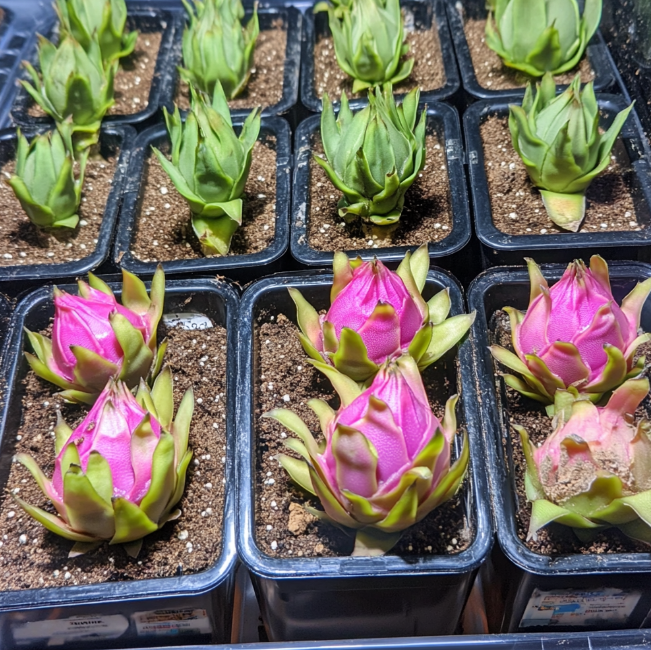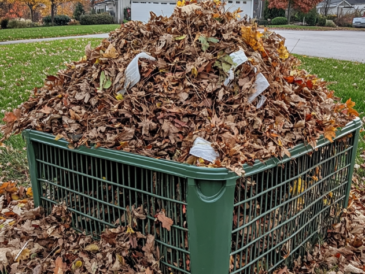Dragon fruit, also known as pitaya, is a stunning and exotic fruit that’s becoming increasingly popular among gardeners and fruit enthusiasts. With its vibrant pink or yellow skin and speckled flesh, dragon fruit is not only a visual treat but also packed with nutrients. The good news? You can grow this tropical delight right at home, even if you don’t have a large garden. With a little patience and care, you can grow dragon fruit in pots from seeds, turning your balcony or patio into a mini tropical oasis.
What You’ll Need:
- Fresh dragon fruit
- A small, sharp knife
- A spoon
- Paper towels
- Small pots or seed trays
- Well-draining potting mix (cactus or succulent mix works well)
- Plastic wrap or a plastic bag
- A larger pot (12-24 inches in diameter) for transplanting
- A trellis or support stake
- Watering can or spray bottle
Step 1: Harvesting the Seeds
The first step in growing dragon fruit from seeds is to obtain the seeds from a fresh dragon fruit. Here’s how:
- Select a ripe dragon fruit: Look for one that is firm, yet gives slightly when pressed. The skin should be vibrant in color with no blemishes.
- Cut the fruit in half: Use a small, sharp knife to slice the dragon fruit lengthwise. The inside should reveal the fruit’s white or red flesh speckled with tiny black seeds.
- Scoop out the flesh: Using a spoon, scoop out the flesh into a bowl. Be careful not to dig too deep into the skin.
- Extract the seeds: Place the flesh on a paper towel and gently press to separate the seeds from the flesh. You can also rinse the seeds under cold water to help remove any remaining pulp. Allow the seeds to dry on the paper towel for a day or two.
Step 2: Planting the Seeds
Once the seeds are dry, it’s time to plant them. Here’s what you need to do:
- Fill small pots or seed trays with well-draining potting mix. A cactus or succulent mix is ideal, as dragon fruit plants prefer a dry, well-aerated environment.
- Plant the seeds: Scatter the seeds over the surface of the soil, pressing them gently into the soil without burying them. The seeds need light to germinate, so do not cover them with soil.
- Water lightly: Use a spray bottle or a very gentle watering can to moisten the soil. Be careful not to overwater, as the seeds are delicate at this stage.
- Cover with plastic: Cover the pots or trays with plastic wrap or a plastic bag to create a mini greenhouse effect. This helps retain moisture and warmth, speeding up the germination process.
- Place in a warm, sunny spot: Dragon fruit seeds need warmth to germinate, so place the pots in a sunny location where they can get at least 6-8 hours of sunlight daily.
Step 3: Caring for the Seedlings
Germination can take anywhere from 1 to 4 weeks, depending on the conditions. Here’s how to care for your seedlings:
- Monitor moisture: Keep the soil slightly moist but not soggy. Remove the plastic cover once the seeds have sprouted to prevent mold growth.
- Provide adequate light: Ensure the seedlings get plenty of light. If natural light is insufficient, consider using a grow light to supplement.
- Thin the seedlings: Once the seedlings have grown a few inches tall, thin them out by removing the weaker ones, leaving the strongest seedlings to continue growing.
- Transplant to larger pots: When the seedlings reach about 4-6 inches in height and have developed a few sets of true leaves, it’s time to transplant them into larger pots. Choose a pot that is at least 12 inches in diameter and 12 inches deep, but a 24-inch pot is even better for long-term growth.
Step 4: Transplanting and Support
Dragon fruit plants are climbing cacti, so they’ll need support as they grow taller. Here’s what to do:
- Prepare the pot: Fill the larger pot with well-draining potting mix. Plant the seedling in the center, at the same depth it was growing in its smaller pot.
- Add support: Insert a trellis, stake, or support pole into the pot, near the base of the seedling. As the dragon fruit plant grows, gently tie it to the support to encourage upward growth.
- Place in a sunny spot: Dragon fruit thrives in warm, sunny conditions, so place the pot in a location that receives full sun for most of the day.
Step 5: Ongoing Care
With the right care, your dragon fruit plant can grow into a healthy, fruit-bearing cactus. Here’s how to keep it thriving:
- Watering: Water the plant deeply but infrequently, allowing the soil to dry out between waterings. Overwatering can lead to root rot, so it’s better to err on the side of caution.
- Fertilizing: Feed your dragon fruit plant with a balanced fertilizer every 4-6 weeks during the growing season (spring and summer). Reduce fertilizing in the fall and winter when the plant’s growth slows.
- Pruning: Prune the plant to remove any dead or damaged stems and to encourage a strong, upright growth habit. This helps the plant focus its energy on fruit production.
- Pollination: Dragon fruit plants often need help with pollination, especially if grown indoors. Use a small brush to transfer pollen from one flower to another, mimicking the action of bees.
Harvesting Your Dragon Fruit
Dragon fruit plants typically take 2-3 years to produce fruit when grown from seed. When the fruit is ready to harvest, it will be brightly colored and slightly soft to the touch. Simply twist the fruit gently to remove it from the plant.
Growing dragon fruit in pots from seeds may require patience, but the reward of harvesting your own exotic fruit makes it well worth the effort. With these detailed steps, you’ll be well on your way to enjoying fresh, homegrown dragon fruit right from your patio or balcony.




